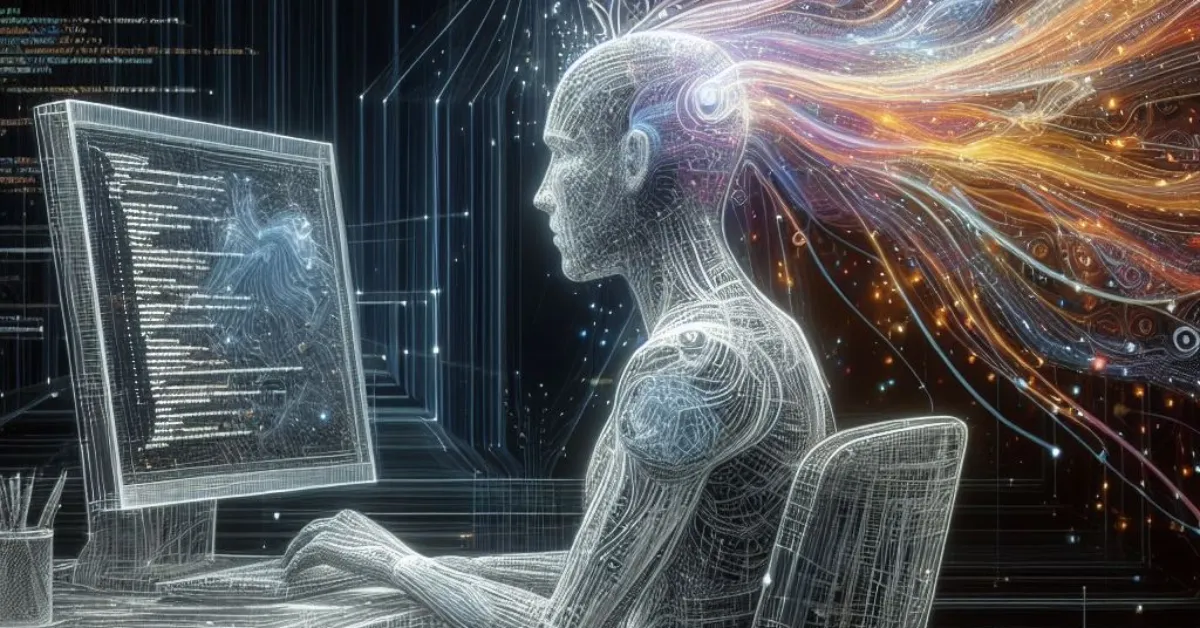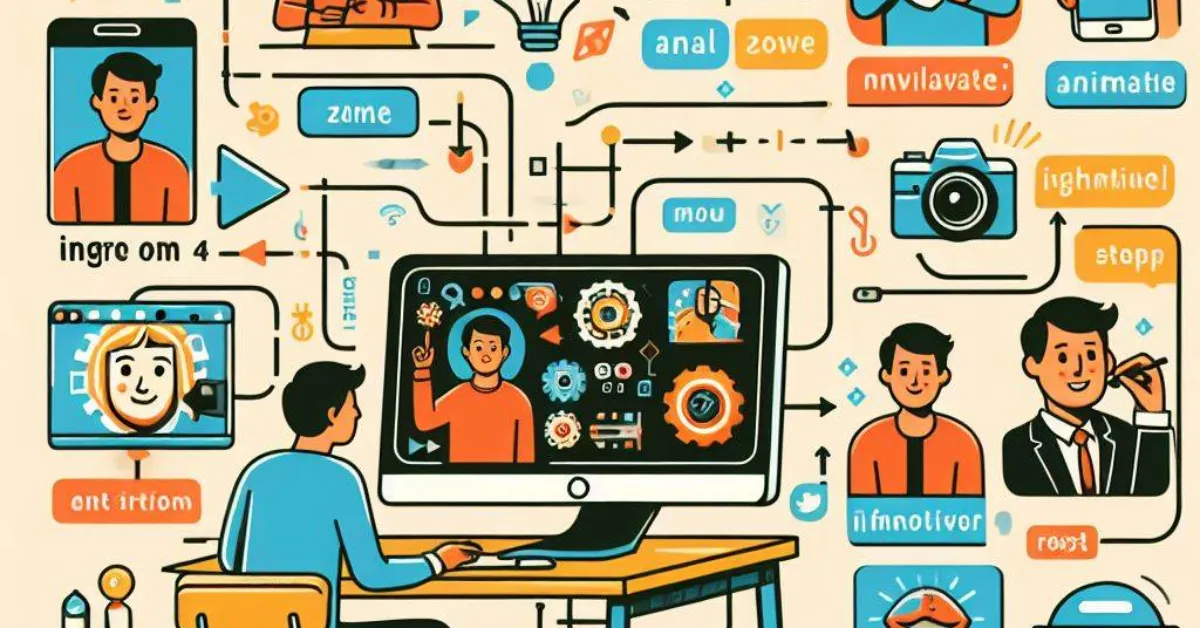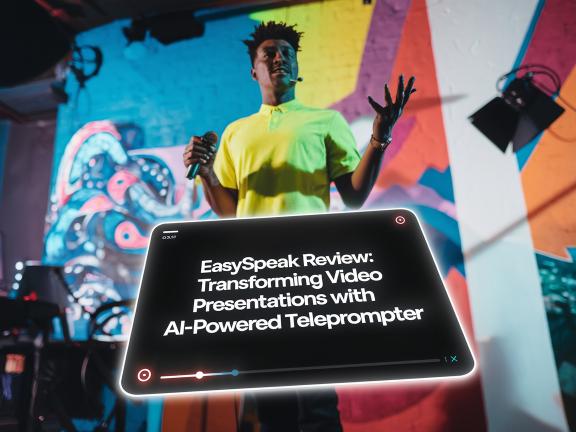How does AI image generation work by using neural networks to create visual content from textual or visual inputs? These networks learn from vast datasets to produce new images.
AI image generation technology transforms the way visuals are created, ushering in a new era of design and creativity. At its core are algorithms called Generative Adversarial Networks (GANs) or variations such as transformers and autoencoders, which train on countless examples of images to understand patterns, textures, and relationships between objects.
This allows them to generate high-quality, unique visuals seemingly out of thin air. Artists, designers, and content creators harness this power to generate anything from realistic photos to abstract art, all with a simple prompt or modification of parameters. As technology evolves, so does the ability to produce visuals that are increasingly complex and difficult to distinguish from those created by human hands. This innovation not only streamlines the creative process but also opens up a world of possibilities for personalized and dynamic visual content.

How Does Ai Generate Images
AI image generation harnesses deep learning algorithms to create visual content from textual or pictorial inputs. Neural networks, trained on vast datasets, transform user prompts into detailed images, simulating human-like artistic capabilities.
The emergence of AI image generation has revolutionized the way we create and perceive visual content. This technology, harnessed by artists, designers, and developers alike, allows machines to produce images that were once only possible through the hands of a skilled human.
But what’s the secret behind these algorithm-driven masterpieces? Let’s delve into the workings of AI image generation systems.
Understanding Neural Networks
At the heart of AI image generation are neural networks, sophisticated models designed to mirror the way human brains process information. These networks are composed of interconnected nodes or ‘neurons,’ each responsible for a tiny slice of the overall task.
- Node Layers: These are structured in layers, with input, hidden, and output stages. They interact to transform the input data (like a text prompt) into the desired output (a visual image).
- Learning Process: The networks undergo training, where they are fed massive datasets of images. Over time, they learn to identify and replicate intricate patterns and features.
Generative Adversarial Networks (gans)
One of the key frameworks for AI-driven image production is the Generative Adversarial Network, also known as GAN. It’s fascinating how GANs employ a dual-system approach to refine their output.
- Two-Part System: GANs consist of a generator and a discriminator that work in tandem. The generator creates images, while the discriminator evaluates them against real ones.
- Evolution through Competition: The two parts of a GAN are in a constant battle. The generator strives to make images that the discriminator can’t distinguish from real ones, improving through each iteration.
Transfer Learning And Fine-tuning
AI doesn’t always start from scratch. Transfer learning is a method that accelerates the image generation process by utilizing pre-trained models.
- Pre-Trained Models: Transfer learning involves adapting a model already trained on a large dataset to a specific task. This saves resources and time.
- Customization: Fine-tuning these models with a smaller, task-specific dataset ensures the AI can generate images that fit particular aesthetic or thematic requirements.
Prompt-based Image Generation
A newer development in the world of AI is prompt-based image generation, offering a user-friendly way to create visuals.
- User Input: Users provide text prompts, outlining the subject, style, and elements they’d like in the image.
- AI Interpretation: The AI interprets the prompt, drawing on its learned patterns to craft an image that aligns with the user’s specifications.
The Role Of Autoencoders
Autoencoders are another critical technology in image generation, often used for tasks like image denoising and dimensionality reduction.
- Encoding and Decoding: The process involves an encoder reducing the input data to a simpler representation and then a decoder reconstructing it into an image.
- Capturing Essence: This allows the AI to capture the essential characteristics of a visual concept and generate images that reflect the core elements.
AI image generation is indeed a testament to the remarkable potential of technology when it comes to creative processes. The interplay between complex algorithms and vast datasets has given rise to a new era in visual content creation, where the boundary between artificial and authentic becomes increasingly blurred.
With these insights, you can now appreciate the magic behind every pixel an AI conjures.

How To Use AI Image Generator
Harness the power of AI to bring your visual concepts to life with an image generator—simply input a description and let the algorithm create. Delve into the nuances of AI image generation: select your style, tweak parameters, and generate unique artworks effortlessly.
Step-by-step Guide To Using An AI Image Generator
The evolution of artificial intelligence has made creative processes more accessible, and AI image generators are a perfect example of this technological advancement. They allow you to create images that are sometimes beyond the scope of human imagination. Let’s walk you through the process of using these amazing tools.
Choosing The Right AI Image Generator Platform
Before you dive into the world of AI-generated images, selecting the appropriate platform is crucial. Each generator offers a variety of features and user interfaces:
- Research compatibility: Ensure the platform you choose is compatible with your device and operating system.
- Determine the complexity: Some generators are designed for professional artists, while others cater to beginners.
- Explore features: Look for tools that offer a wide range of styles, patterns, and customization options.
Inputting Your Image Prompts Accurately
One of the most important aspects of generating an image with AI is how you communicate your vision to the software. This is done through prompts:
- Be specific with details: The more descriptive your prompt, the closer the result will be to your intended image.
- Understand the limitations: While AI is powerful, it may not perfectly replicate exact images or specific persons due to ethical guidelines.
Customizing And Refining Your Generated Image
After receiving the initial output, refining the result to meet your satisfaction is often necessary:
- Use the built-in editing tools: Many generators offer options to tweak colors, composition, and more.
- Utilize feedback loops: Some platforms learn from your edits, offering improved results with subsequent attempts.
Saving And Exporting Your AI-generated Artwork
Upon achieving a satisfactory image, you’ll need to save and use your digital creation:
- Check the file formats available: Ensure the platform supports the file type you need for your project.
- Consider resolution options: For print or high-resolution use, verify that the AI generator can export at the quality you require.
Ethical Considerations And Copyright
Always be mindful of the legal and ethical ramifications of using AI-generated images:
- Look up usage rights: Understand the terms of service regarding image rights and usage provided by the platform.
- Use original prompts: To avoid copyright infringement, create unique prompts or use royalty-free references.
By following these guidelines, you can harness the full potential of AI image generators to enhance your creative projects. Whether for professional use or personal enjoyment, these tools open up a new world of possibilities in the realm of digital art.
Free Ai Tools For Social Media
Exploring the capabilities of free AI tools for social media, users can effortlessly create eye-catching visuals. AI image generation harnesses machine learning to transform textual descriptions into stunning graphics, streamlining content creation for platforms like Instagram and Twitter.
Understanding Free AI Tools For Social Media
Harnessing the power of artificial intelligence has become critical in revolutionizing how we craft and curate visual content for social media. Free AI image-generation tools have emerged as a game-changer, providing creators, marketers, and entrepreneurs with the ability to craft stunning visuals quickly and without the need for advanced design skills or expensive software.
These tools not only speed up the content creation process but also invite users to experiment with new, creative approaches that can enhance their social media presence.
Popular Free Ai Image Generation Tools
Before diving into the inner workings of AI image generation, let’s explore some of the most popular free tools that can elevate your social media game:
- Deep Dream Generator:
This tool uses a deep neural network to transform your images into dream-like pieces of art. You can select different styles and algorithms to manipulate your photos in unique ways.
- Crello:
A versatile graphic design tool that offers a variety of pre-designed templates and customization options. Using AI, Crello simplifies the design process, making it easy for non-designers to produce professional-looking social media content.
- Deep Art Effects:
For those who appreciate the touch of classic art in their images, Deep Art Effects uses AI to replicate famous painting styles onto your photos, giving them an artistic and sophisticated flair.
How AI Image Generators Work
When you use a free AI image generator, you are tapping into complex machine learning models trained on vast datasets of images. These AI systems learn from patterns and visual information to replicate styles, textures, and elements in new compositions.
Through an iterative process, the generator refines the output until it meets the parameters you’ve set, delivering a unique image that can captivate your social media audience.
Best Practices For Using Free AI Tools
Using free AI image generation tools effectively requires more than just a creative eye; it involves strategic thinking and an understanding of what engages your target audience:
- Select the Right Tool:
Each AI image generator has its strengths. Choose one that aligns with the aesthetic you’re aiming for and the message you want to convey through your visuals.
- Experiment and Iterate:
Don’t settle for the first result. Play with different settings and styles. AI tools often produce surprising and inspiring results when you push the boundaries of their capabilities.
- Stay on Brand:
Even though AI can produce a wide range of visuals, ensure the images you generate align with your brand identity and the overall tone of your social media presence.
Empowering your social media strategy with free AI image generation tools can lead to a more dynamic and engaging online presence. With various options at your disposal and a clear understanding of their functionality, you can create high-quality, attention-grabbing graphics that resonate with your audience and keep them coming back for more.
How To Use AI to Create Images
AI image generation harnesses machine learning to transform text prompts into visual art. Users input descriptive language, which AI algorithms interpret, creating corresponding imagery through complex processes like neural network computation. This technology bridges human creativity and machine efficiency, offering endless possibilities in digital art creation.
Artificial Intelligence (AI) image generation is revolutionizing the way we create visual content, turning mere descriptions into vivid illustrations with the simple click of a button. Let’s delve into the mechanics of this fascinating technology and discover how to harness its capabilities to produce captivating imagery.
Understanding The Basics Of Ai Image Generation
AI image generation works by using complex algorithms that can interpret text or data inputs to produce visual representations. These algorithms are generally based on neural network models that mimic the way the human brain operates. They’ve been trained on vast datasets of images, which enables the AI to “learn” different styles, elements, and the relationship between objects.
Preparing To Use Ai Image Generation Tools
- Research Compatible AI Tools:
Start by exploring the AI image generation tools available in the market. Some popular ones include DALL-E, DeepAI, and Artbreeder.
- Input Requirements:
Understand the input requirements of the tool you choose. Some tools require detailed descriptions, while others work with simple keywords or phrases.
Crafting The Right Prompts:
Crafting the perfect prompt is the key to obtaining your desired output. Think of it as a direct line of communication with the AI, informing it of what you envision.
- Specificity is Your Friend:
The more specific your prompt, the more closely the output will resemble your initial concept. Descriptive language helps the AI to grasp and generate intricate details.
- Experiment with Styles and Keywords:
Inject style and mood keywords into your prompts to guide the AI’s creativity – from realism to impressionism or even surrealism; creativity knows no bounds with AI.
Tweaking And Refining Your Images:
Keep a keen eye on the results and don’t be afraid to refine your requests. AI is incredibly adaptive and iterative tweaking often leads to perfection.
- Iteration Leads to Perfection:
Use the initial outputs as a starting point. Refinement could range from adjusting colors to altering the scene’s composition.
- Feedback Loops:
Provide feedback to the AI where possible. Certain platforms allow users to highlight what they liked or didn’t like in the generated image, which can lead to improved results upon regeneration.
Harnessing the power of AI to generate images is like having a personal artist at your fingertips – one that speaks the language of pixels and possibilities. By understanding the capabilities and limits of AI image generation tools, crafting clear and detailed prompts, and being willing to experiment and refine, anyone can bring their visual ideas to life in a way that was once the domain of skilled human artists alone.
As AI continues to evolve, the borderline between human and machine-created art will undoubtedly become even more intertwined. Embrace the AI revolution and let your creativity soar!
Frequently Asked Questions On How Does Ai Image Generation Work
How Does An Image Generator Work In AI?
An AI image generator utilizes algorithms to analyze vast datasets of images. It then creates new visual content by identifying and replicating patterns and styles from the learned data.
How Are People Doing AI-generated Images?
People create AI-generated images using specialized software that leverages artificial intelligence algorithms. They input text descriptions or parameters, and the AI generates visual content based on that input.
How Does AI Art Generation Work?
AI art generation utilizes algorithms to create artwork from input data. It learns from vast art databases and then applies neural networks to generate new visuals. Users guide the process by providing prompts, and the AI offers unique artistic interpretations.
How Does Photo Generative AI Work?
Photo generative AI utilizes algorithms to analyze and learn from vast datasets of images. It then creates new, unique visuals by mimicking the styles and patterns it has learned. This technology operates through neural networks, which iteratively improve output quality.
Embarking on the journey through AI image generation has been enlightening. We’ve explored the intricate dance of algorithms that bring static data to life. This technology is a testament to human ingenuity, constantly pushing artistic boundaries. For creators and consumers alike, the future of visual media gleams with AI-crafted possibilities.
Stay tuned for more innovations as this field evolves.







